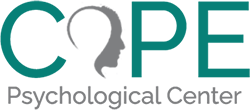Recovering from PTSD: A Path to Healing and Hope
Recovering from PTSD (Post-Traumatic Stress Disorder) is a journey many people embark on after experiencing trauma. This journey can be challenging and requires understanding, support, and the right therapeutic interventions. Learn more about Cognitive Behavioral Therapy (CBT), its benefits, and the importance of trauma-focused treatment.
What is PTSD?
Post-Traumatic Stress Disorder (PTSD) is a mental health condition that arises after experiencing or witnessing a traumatic event. Such events may include natural disasters, serious accidents, terrorist attacks, war/combat, rape, or other violent personal assaults. PTSD can develop immediately after the event, or it might surface months or even years later. The disorder is characterized by a range of symptoms that can severely disrupt a person’s life.
Who Can Suffer from PTSD?
PTSD does not discriminate; it can affect anyone, regardless of age, gender, or background. However, certain groups may be more at risk. These include:
- Military Personnel and Veterans: Due to the high-stress and traumatic nature of combat.
- First Responders: Police officers, firefighters, and paramedics often encounter traumatic scenes.
- Survivors of Abuse: Those who have experienced physical, sexual, or emotional abuse.
- Accident Victims: Individuals involved in severe accidents or life-threatening situations.
- Witnesses to Traumatic Events: Even witnessing an event can lead to PTSD.
Symptoms and Signs of PTSD
PTSD manifests through various symptoms, which can be grouped into four main categories:
- Intrusive Memories: This includes flashbacks, nightmares, and severe emotional distress or physical reactions to reminders of the trauma.
- Avoidance: Efforts to avoid thinking about or discussing the traumatic event, and avoiding places, activities, or people that remind one of the trauma.
- Negative Changes in Thinking and Mood: This might involve feelings of hopelessness, memory problems, difficulty maintaining close relationships, and feeling detached from family and friends.
- Changes in Physical and Emotional Reactions: This can include being easily startled, feeling tense or on edge, having difficulty sleeping, and experiencing angry outbursts or aggressive behavior.
How PTSD Affects Your Life
Living with PTSD can be debilitating. The constant state of heightened alertness and anxiety can make everyday activities difficult. Relationships may suffer as individuals with PTSD often withdraw from social interactions or become irritable and aggressive. Work and academic performance may decline due to concentration issues, and the risk of substance abuse increases as some may turn to drugs or alcohol to cope with their symptoms. Overall, the quality of life can diminish significantly, making it crucial to seek effective treatment.
Recovering from PTSD: An Overview of Cognitive Behavioral Therapy (CBT)
One of the most effective therapies for recovering from PTSD is Cognitive Behavioral Therapy (CBT). CBT is a structured, time-limited, and evidence-based therapy that focuses on identifying and challenging negative thought patterns and behaviors.
Recovering from PTSD: What is CBT?
CBT is grounded in the concept that our thoughts, feelings, and behaviors are interconnected. By changing negative thought patterns, we can alter our emotional responses and behaviors. CBT for PTSD involves several key components:
- Cognitive Processing Therapy (CPT): Helps patients process and reframe negative thoughts about the trauma.
- Prolonged Exposure Therapy (PE): Involves gradually confronting trauma-related memories, feelings, and situations.
- Trauma-Focused CBT: Combines trauma-sensitive interventions with cognitive behavioral principles to help individuals process and cope with traumatic experiences.
Recovering from PTSD: How CBT Helps
CBT helps individuals with PTSD in several ways:
- Reduction of Symptoms: By addressing and altering distressing thoughts and behaviors, CBT can significantly reduce PTSD symptoms.
- Improved Coping Strategies: Patients learn effective coping mechanisms to handle stress and anxiety.
- Enhanced Emotional Regulation: CBT aids in managing intense emotions that often accompany PTSD.
- Better Quality of Life: With symptom reduction and improved coping, individuals can regain control over their lives.
Recovering from PTSD: Cognitive Processing Therapy (CPT)
Cognitive Processing Therapy (CPT) is a specialized form of Cognitive Behavioral Therapy (CBT) designed specifically to treat Post-Traumatic Stress Disorder (PTSD). Developed in the 1980s, CPT is rooted in the understanding that PTSD often stems from a disruption in the way a person processes traumatic events. This therapy focuses on helping individuals reframe and rationalize their thoughts about the trauma to alleviate the psychological impact.
Recovering from PTSD: How CPT Works
CPT typically unfolds over 12 sessions, though the exact duration can vary depending on individual needs. The therapy can be conducted in individual or group settings and follows a structured approach:
- Education: The initial phase involves educating the patient about PTSD and the role of thoughts and beliefs in maintaining symptoms. Understanding the nature of PTSD and how it affects thinking patterns is crucial for setting the stage for deeper cognitive work.
- Processing the Trauma: Patients are encouraged to write a detailed account of their traumatic experience, which serves as a foundation for therapy. This process helps in confronting and processing the trauma rather than avoiding it.
- Identifying and Challenging Maladaptive Thoughts: This core phase involves identifying “stuck points,” which are dysfunctional beliefs related to the trauma that hinder recovery. Common stuck points include feelings of guilt, self-blame, and distorted beliefs about safety and trust.
- Cognitive Restructuring: Patients learn to challenge and modify these maladaptive thoughts through guided questioning and evidence-based exercises. By critically examining their beliefs, patients begin to adopt healthier, more balanced perspectives.
- Addressing Specific Issues: CPT also addresses specific themes such as power/control, esteem, intimacy, and safety. These themes are common areas where trauma survivors might develop distorted thinking patterns.
Recovering from PTSD: Effectiveness of CPT
Research has shown CPT to be highly effective in reducing PTSD symptoms. By helping patients reframe their traumatic experiences and their associated beliefs, CPT reduces the emotional distress tied to these thoughts and improves overall functioning. Patients often report a significant decrease in PTSD symptoms, anxiety, and depression, leading to improved quality of life.
Recovering from PTSD: Prolonged Exposure (PE)
Prolonged Exposure (PE) therapy is another evidence-based treatment specifically designed for PTSD. It is based on the principle that repeatedly confronting trauma-related thoughts, feelings, and situations in a safe and controlled environment can reduce the power these memories have over a person’s life.
Recovering from PTSD: How PE Works
PE therapy typically involves around 8-15 sessions, where the therapist guides the patient through various components aimed at reducing avoidance behaviors and emotional distress:
- Psychoeducation: Similar to CPT, the initial sessions of PE focus on educating the patient about PTSD and the rationale behind exposure therapy. Understanding the fear response and the avoidance behaviors that sustain PTSD is crucial for patient buy-in.
- In Vivo Exposure: This component involves gradually confronting safe situations or places that the patient has been avoiding due to their association with the trauma. By systematically facing these triggers, patients learn that their fears are often disproportionate and that they can manage the anxiety that arises.
- Imaginal Exposure: Patients repeatedly recount their traumatic experience in detail during therapy sessions. This is recorded, and patients are asked to listen to these recordings between sessions. The goal is to help patients process the trauma and reduce the emotional impact of these memories over time.
- Emotional Processing: Throughout PE, patients are encouraged to process the emotions that arise during exposure exercises. Therapists help patients make sense of these emotions and integrate the traumatic memories into their broader life narrative.
Recovering from PTSD: Effectiveness of PE
Prolonged Exposure therapy has a strong empirical foundation, demonstrating significant reductions in PTSD symptoms. By directly confronting and processing trauma-related memories and fears, patients can diminish the grip these memories have on their daily lives. PE helps break the cycle of avoidance and teaches coping skills, leading to long-term improvements in emotional well-being and functioning.
Recovering from PTSD: Research Supporting CBT
Research consistently supports the effectiveness of trauma-focused CBT for PTSD, in line with the guidelines. Studies have demonstrated that CBT is more effective than a waitlist (Power et al., 2002), supportive therapy (Blanchard et al., 2003), and a self-help booklet (Ehlers et al., 2003). Various components of CBT, such as imaginal exposure, in vivo exposure, and cognitive restructuring, have been compared with mixed results.
In a randomized controlled trial (RCT) by Marks et al. (1998), exposure therapy (comprising five sessions of imaginal exposure and five sessions of in vivo exposure), cognitive restructuring, combined exposure therapy and cognitive restructuring, and relaxation were evaluated. Both exposure therapy and cognitive restructuring effectively reduced PTSD symptoms and were found to be superior to relaxation. However, combining exposure therapy and cognitive restructuring did not produce mutually enhancing effects.
In contrast, Bryant et al. (2008) compared imaginal exposure alone, in vivo exposure alone, a combination of imaginal and in vivo exposure, and a combination of imaginal, in vivo exposure, and cognitive restructuring. This study found that the treatment condition incorporating both exposure components and cognitive restructuring had the largest effect size and resulted in fewer patients retaining a PTSD diagnosis at a 6-month follow-up.
Regarding the loss of diagnosis, between 61% and 82.4% of participants treated with CBT no longer met the criteria for PTSD. Furthermore, 26% more participants who received CBT, compared to those on a waitlist or receiving supportive counseling, achieved a loss of PTSD diagnosis (Jonas et al., 2013).
Recovering from PTSD: The Importance of Trauma-Focused Treatment
Trauma-focused treatment, such as Trauma-Focused CBT, is crucial for effective PTSD recovery. This type of therapy specifically addresses the unique needs of trauma survivors. It helps them process and make sense of their experiences, reduces the emotional impact of the trauma, and teaches skills to manage future stressors. Trauma-focused therapies are tailored to be sensitive to the complex and often deeply personal nature of trauma, ensuring a compassionate and effective approach to healing.
Contact COPE Psychological Center
If you or a loved one are interested in recovering from PTSD, it’s important to reach out for professional help. The COPE Psychological Center specializes in trauma-focused treatments and offers a range of therapeutic interventions to support recovery. Don’t let PTSD control your life any longer. Contact COPE Psychological Center today and take the first step towards healing and reclaiming your life. Your journey to recovery starts now, and compassionate, expert help is available.

